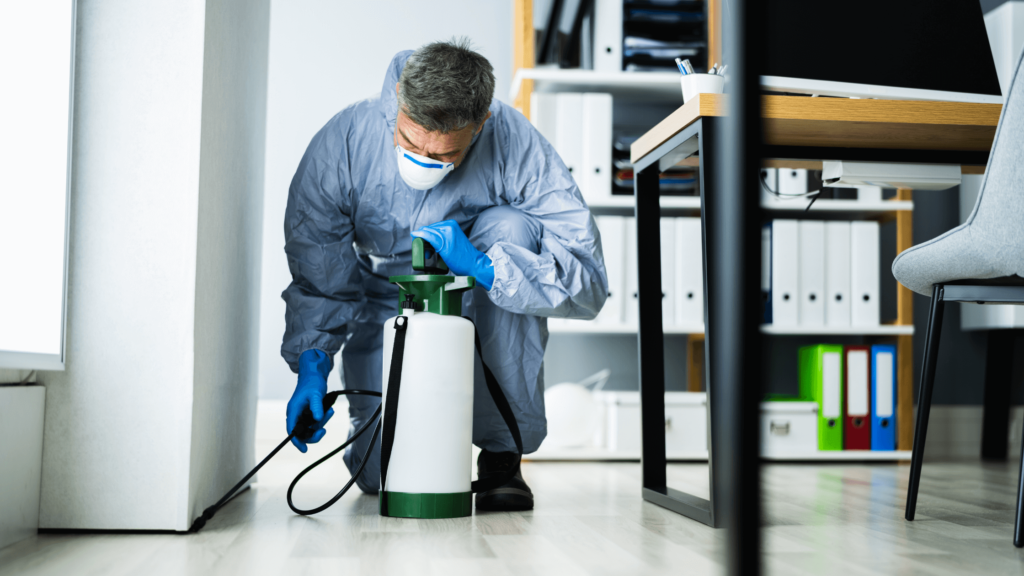1.1 Overview of Pest Management in Houston
Houston, with its warm climate and urban landscape, is a breeding ground for various pests that can threaten businesses across different industries. Effective pest management in houston is crucial to maintaining the health and safety of employees and customers, as well as protecting the integrity of products and services.
1.2 Importance of Industry-Specific Pest Control
Different industries face unique challenges when it comes to pest control. A one-size-fits-all approach may not be effective, making it essential to tailor pest management solutions to the specific needs of each industry. This article explores the various pest management strategies used in different sectors in Houston.
2. Common Pests in Houston
2.1 Types of Pests Affecting Various Industries
Houston’s climate supports a wide variety of pests, including rodents, cockroaches, ants, termites, and mosquitoes. Each industry may be affected differently, depending on the environment and operations involved.
2.2 Seasonal Pest Patterns
Pest activity in Houston varies with the seasons. For example, mosquito populations peak in the summer, while rodents tend to seek shelter indoors during the colder months. Understanding these patterns helps in developing effective pest control strategies.
3. Pest Management in the Food Industry
3.1 Regulatory Requirements
The food industry in Houston is subject to strict regulations to ensure food safety and hygiene. Compliance with these regulations requires a robust pest management plan that addresses the unique risks associated with food production and storage.
3.2 Common Pests in Food Facilities
Common pests in food facilities include rodents, cockroaches, flies, and stored product pests like beetles and moths. These pests can contaminate food products, leading to health risks and regulatory violations.
3.3 Effective Pest Control Strategies
Integrated Pest Management (IPM) is often used in the food industry, combining preventive measures, monitoring, and targeted treatments to control pests. Regular inspections, proper sanitation, and the use of non-toxic baits and traps are key components of an effective IPM plan.
4. Pest Management in Healthcare Facilities
4.1 Importance of Sanitation and Safety
In healthcare settings, pest management is critical to maintaining a sterile environment and preventing the spread of diseases. Any infestation can compromise patient safety and lead to serious health risks.
4.2 Pests Commonly Found in Healthcare Settings
Common pests in healthcare facilities include ants, rodents, flies, and bed bugs. These pests can be attracted to food sources, waste areas, and the warmth provided by indoor environments.
4.3 Tailored Pest Control Solutions
Healthcare facilities require customized pest control solutions that minimize the use of toxic chemicals while effectively controlling pests. IPM strategies are often employed, focusing on prevention, regular monitoring, and the use of safe, targeted treatments.
5. Pest Control in Hospitality and Tourism
5.1 Guest Satisfaction and Pest-Free Environments
For hotels and resorts in Houston, maintaining a pest-free environment is essential for guest satisfaction. A single pest sighting can lead to negative reviews and loss of business.
5.2 Common Pests in Hotels and Resorts
Common pests in the hospitality industry include bed bugs, ants, cockroaches, and rodents. These pests can enter through luggage, food deliveries, or structural vulnerabilities in buildings.
5.3 Integrated Pest Management (IPM) Strategies
IPM strategies in hospitality settings involve regular inspections, proper waste management, and preventive measures such as sealing entry points and maintaining cleanliness. Bed bug control, in particular, requires careful monitoring and quick response.
6. Pest Management for the Manufacturing Industry
6.1 Protecting Products and Equipment
In the manufacturing industry, pests can damage products, equipment, and infrastructure, leading to significant financial losses. Effective pest management is essential to maintain product quality and operational efficiency.
6.2 Common Pests in Manufacturing Plants
Pests commonly found in manufacturing plants include rodents, insects, and birds. These pests can cause contamination, damage to machinery, and create unsafe working conditions.
6.3 Customized Pest Management Plans
Manufacturing facilities require pest management plans tailored to their specific operations. This may involve sealing entry points, implementing strict sanitation protocols, and using targeted treatments to address specific pest threats.
7. Green Pest Management Solutions
7.1 Eco-Friendly Pest Control Methods
Green pest management solutions are becoming increasingly popular in Houston, especially in industries that prioritize sustainability. These methods include the use of non-toxic baits, natural predators, and organic repellents.
7.2 Benefits of Green Solutions in Different Industries
Eco-friendly pest control solutions offer several benefits, including reduced environmental impact, improved safety for employees and customers, and compliance with sustainability standards. These solutions are particularly beneficial in sensitive environments like healthcare facilities and food production.
8. Case Studies
8.1 Successful Implementation in the Food Industry
A major food processing facility in Houston successfully implemented an IPM plan that reduced pest activity by 90% within a year. This was achieved through improved sanitation practices, regular inspections, and the use of non-toxic baits.
8.2 Case Study in Healthcare Facilities
A Houston-based hospital faced a persistent ant infestation that was resolved through a combination of environmental modifications and targeted treatments. The hospital’s pest management plan now includes regular monitoring and preventive measures, ensuring a pest-free environment.


